Last Updated on November 5, 2021 by foxintheforest
The season of snow. Despite the freezing temps, blowing wind, and unbearably short days, snowy hikes are simply unmatched. Winter hiking clothes make the chilly weather a far more tolerable place.
I’ll be the first to admit, I hate the cold. I’ve got Reynaud’s Disease, which essentially means the circulation in my extremities leaves a lot to be desired.
Even still, with the right winter hiking clothes, I can get outside and actually enjoy the snowy season.
As a full-time freelance writer for the outdoors, and gear writer for big media outlets such as Backpacker Magazine, I know winter hiking clothes. Not only do I get special access to the latest gear and clothing, but I’ve tested each of these products in real-world conditions.
Affiliate Note:
This page contains affiliate links. This means if you click a link and make a purchase, I get a small kickback at no added cost to you. This allows me to continue to give your awesome gear advice. It’s a win-win. To learn more, visit my privacy page.
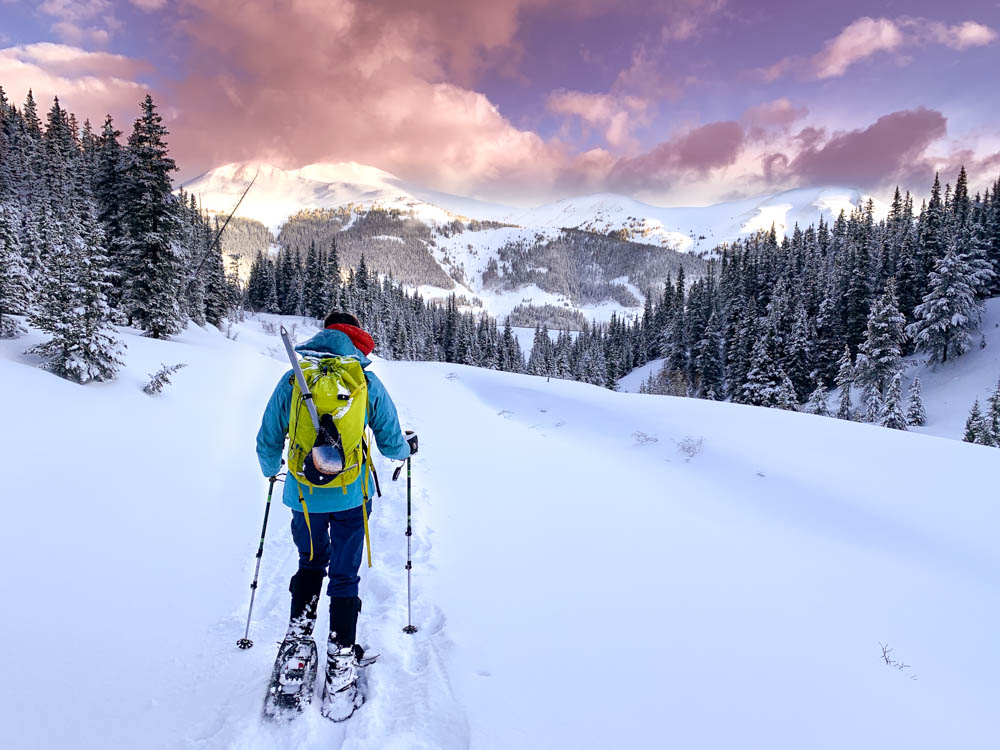
About this Guide to Winter Hiking Clothes
As an expert in all things winter hiking, I’m giving you the inside scoop on the best winter hiking clothes. In this exclusive guide, you’ll find:
- A guide to layer winter hiking clothes
- What to wear for winter hiking
- Choosing the right winter hiking boots
- The best recommendations for winter hiking clothes
- Tips for scoring a deal on winter hiking clothes
- Additional winter hiking resources
How to Layer Winter Hiking Clothes
The key to staying warm while winter hiking is to layer up and layer right. You have three primary layers while winter hiking: base layer, fleece layer, and a waterproof outer shell.
There is a fourth, magical layer that comes in handy when you’re taking a break or temps are truly rugged. This is the mighty puffy layer. It’s certainly essential, but rarely worn while on the move.
What to Look for When Buying Base Layers for winter hiking
First up, invest in solid base layers. These layers, also lovingly referred to as long underwear, are a moisture-wicking base that never comes off. Base layers vary in weights from lightweight to heavyweight. Most winter hikers only need a lightweight or maybe a midweight baselayer bottom and top.
Fleece Layer
Next is the cozy fleece layer. This synthetic layer is specifically designed to breathe but also provide valuable insulation. Typically you’ll want a zippered baselayer for optimal flexibility. Nine times out of ten, this and your base layer will be what you wear while winter hiking.
On the bottom, your “fleece layer” could be softshell winter hiking pants or simply using your summer hiking pants. If you run cold, or you’re traveling in windier, chillier climates, softshell pants are a great investment.
Water and Windproof Shells
On top, you have a waterproof shell. You’ll want both pants and a jacket to be waterproof. Choose a shell layer with pit zips and zippered legs to come on and off easily. This layer is not only useful when it’s snowy, but also blocks the wind.
The All-Sacred Puffy Layer
Your puffy layer goes in between your fleece layer and your outer layer. It’s pretty much your insurance policy if things go wrong. It’s also key for taking breaks. This layer can be either down or synthetic, but you want it to be as packable as possible.
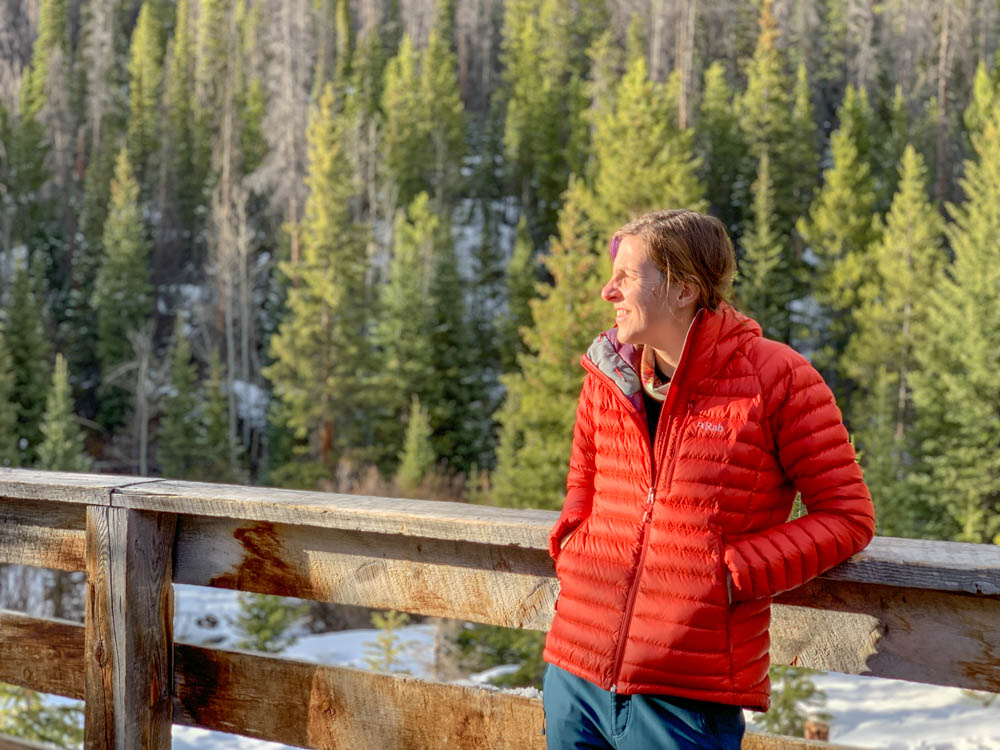
Do I Need to Wear All of My Winter Hiking Clothes at Once?
Lean in, I’m going to let you in on a little secret. The key to staying warm while winter hiking is to not sweat. Yup, that’s right.
It might seem counter-intuitive, but when you sweat, you actually cool off, and you don’t want that.
As a result, it’s best to wear as little clothing as possible while winter hiking. There’s a saying in the alpinist world and it goes “be bold, start cold.”
Try to wear just a base layer on top and winter hiking pants on the bottom. Add on layers as you go (remember items like hats and gloves do a lot to retain and dump heat), but don’t get so hot that you’re pouring sweat.
When you’re stopped, or if the weather turns, it’s time to layer up quickly before any cooling sweat gives you bone-chilling shivers.
What Materials to Wear Winter Hiking
In winter, cotton is simply a no-go. Cotton absorbs moisture and can easily cause hypothermia.
Instead, opt for merino wool or synthetic layers. Merino keeps smells at bay and typically lasts longer than its synthetic cousins, but it’s pricier.
Waterproof down is a lighter, warmer, and more packable alternative to synthetic-filled puffies, but again, it costs a lot more.
For waterproofing, Gore-Tex is the gold standard. Look for breathable Gore-Tex (usually has GTX in the name) or Cordura for the best waterproofing material.
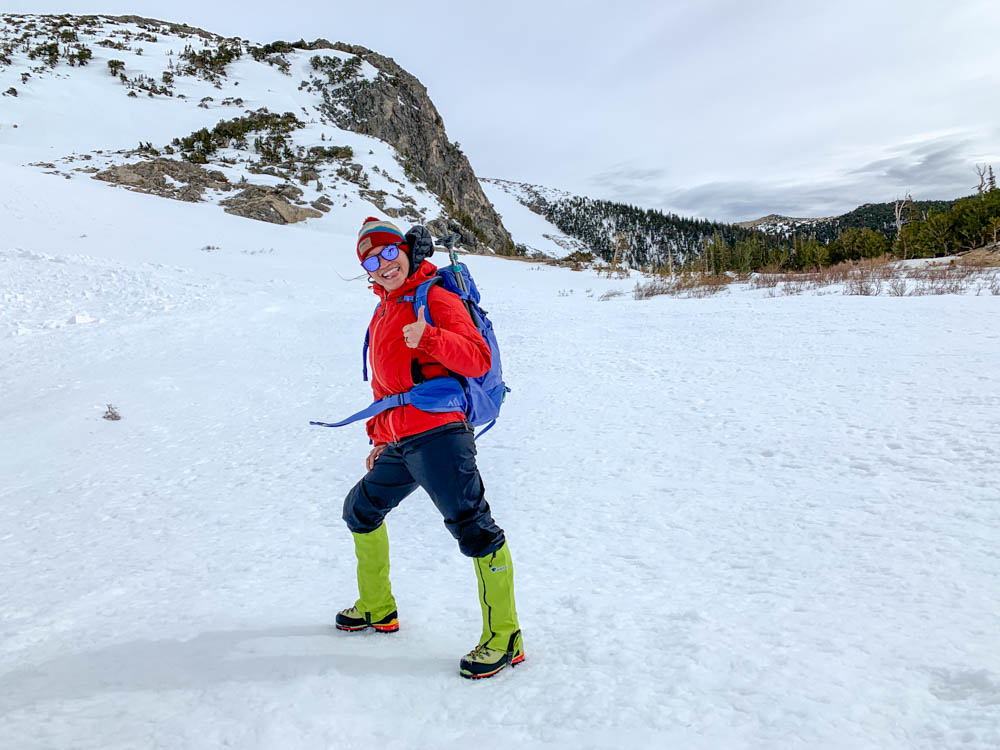
The Best Winter Hiking Boots
When it comes to choosing winter hiking boots, I give one piece of advice. Buy the boot that fits.
Seriously.
I can recommend what works for me, but every foot is different. Essentially, you’re looking for a waterproof boot that goes above the ankle. When you try it on, use the socks you would hike in.
There should be no pressure points, movement, or slipping in the boot. Boot technology has gotten so amazing these days that you should be able to buy a winter hiking boot and have no “break-in” time. It should just flat-out fit.
Be picky with your feet. This is arguably the most important place to throw down some cash, simply because your feet are your mode of transport while hiking.
A few brands I recommend for durability are Lowa, Oboz, and Salomon.
The Best Winter Hiking Clothes
Alright now that you’ve got some winter hiking clothes know-how under your belt, it’s time to dive into the best clothing for winter hiking.
These winter hiking clothes have stood up to years of abuse. You’ll find both a “women’s” and “men’s” recommendation. Clothing may be gendered, but you can purchase whatever fits your body (and personality) best.
Socks for Winter Hiking
Hands-down the best socks for winter hiking are the Smartwool Trekking Heavy Crew Socks (unisex). I’ve had mine for seasons upon seasons and they still have the same warm, fluffy loft as always.
MSRP: $22
For a more heavy-weight sock suited for alpinism, winter summits, and hut trips, opt for the Darn Tough Mountaineering Socks (men’s available too).
MSRP: $30
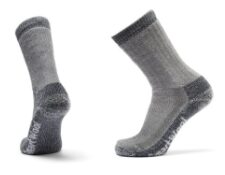
Winter Hiking Underwear
Although you can hike in your normal undies in the winter, it’s nice to have a moisture-wicking pair or two. If you find yourself hiking, camping, and backpacking often, then invest in a pair. ExOfficio Give-N-Go offers up superior smell technology and keep annoying chafe sweat at bay. I bought a pair and I’d never go back.
Give-n-Go 2.0 Bikini MSRP: $18
Give-N-Go 2.0 Boxer Brief MSRP: $26
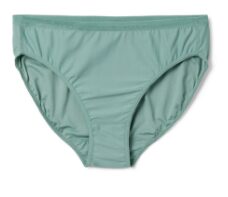
Base Layers for Winter Hiking
One of the most essential pieces of winter hiking clothes is your base layers. Look for both a top and bottom base layer you can wear. If you run cold, opt for a mid-weight base layer on top and a lightweight on the bottom. Otherwise, a lightweight base layer typically works best.
For bottoms, the REI Co-Op base layer tights (MSRP $28-$40) are the best. They last forever and fit under virtually any pants. I even sport them under fitted jeans on cold days). The men’s Base Layer Bottoms (MSRP $40) work just as well.
For tops, Patagonia’s Capilene lineup is impressive. I’ve had my Capilene Midweight Crew (MSRP $44 for women, $59 for men) for 6 years and no complaints. Durable enough to wear while climbing and breathable enough to not feel too hot.
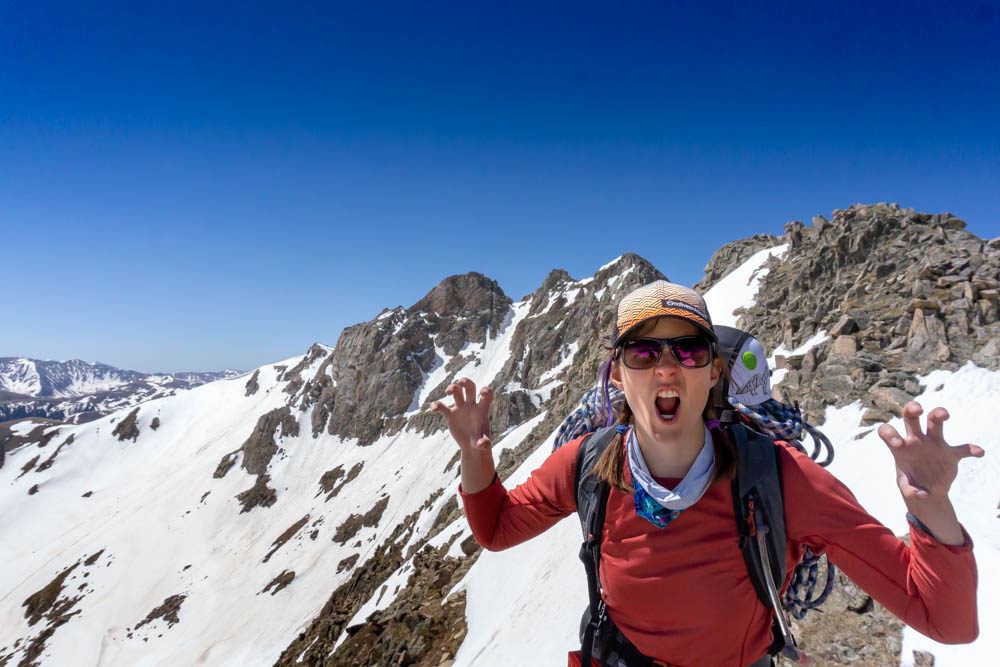
Cozy Fleece Mid-Layers
Your fleece layer should have a checkered pattern on the inside for easy breathing. A full, fleece-lined jacket will be too much and leave you a sopping, sweaty mess.
The Patagonia Full-Zip R1 and the Men’s R1 have been around for eons. They are a durable, long-lasting, sweat-wicking option for the outdoors. The good news is they have a hood too, so you don’t have to necessarily pay extra for a hooded puffy.
MSRP: $169, $129 for no hood and a half-zip
Another amazing option is the Outdoor Research Vigor Hoody (men’s version too). Part fleece, part lightweight jacket, this versatile layer packs well and is lighter weight than the R1 lineup.
MSRP: $74 to $99

Incredibly Puffy Jackets
Time for my favorite layer, the all-mighty puffy. The puffy jacket is one of the most important pieces of winter hiking clothes. Behind your socks, boots, and base layers, this is the best place to spend your money.
Puffies are meant to last for multiple seasons, and I have a few that are still holding strong after 7 years. Think of your puffy as an investment, and remember, you can wear it for more than just hiking.
The down v synthetic debate has been going on for eons. I personally use both. Synthetic layers don’t pack down as well, wear out faster, and are heavier than their down counterparts.
Plus, you’re essentially wearing plastic so there’s that too. But they are far more reasonably priced. If you don’t have nearly $300 to throw at a jacket, then they are a good bet.
Down is more versatile, provides more warmth overall, can can pack down easily. But the price tag is pretty steep and they can get pretty useless if they get too wet.

Down Puffies for Winter Hiking
Rab makes an incredible lineup of down puffy jackets. They use Responsibly Sourced Down that’s treated to be water-resistant. The Microlight Alpine Down Jacket (men’s available) is hands-down the best down jacket for winter hiking.
This jacket could survive the apocalypse. It’s durable, warm as ever, comes with a stuff sack, and has a helmet-compatible hood. Although that may not matter if you aren’t wearing a helmet, it gives you extra space for your favorite beanie too!
MSRP: $280
On the runner up list is the Mammut Meron Light IN Jacket or the men’s Broad Peak Light IN Jacket (MSRP: $279 on sale for $195) even lighter than the Rab and if you don’t need a hood, it’s a great piece of clothing.
I love the most about this jacket is that it can double as a backpacking puffy layer in the summer, since it’s virtually weightless and packs to nothing.
MSRP: $290
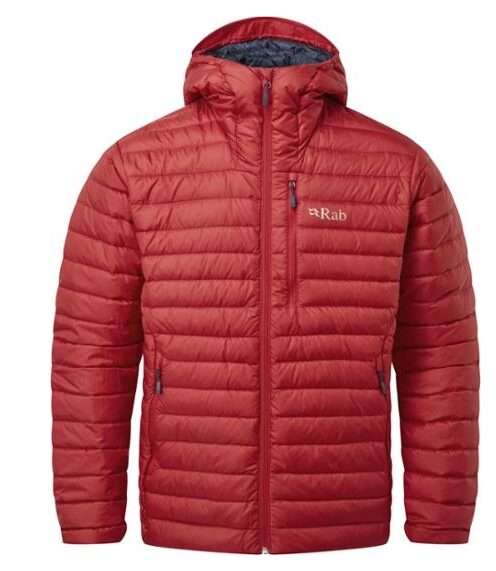
Synthetic Puffy Jackets for Winter Hiking
If nearly $300 isn’t in your budget, don’t fret, a synthetic jacket will still keep you toasty. The North Face Ventrix Hooded Jacket is a complete steal. At $120 to $220 it’s got every feature you want without the big price tag.
Another excellent option is the Outdoor Research Refuge Hooded Insulated Jacket. Just like the Ventrix, it breathes like a charm and the multi-way stretch fabric doesn’t sacrifice movement.
MSRP: $220
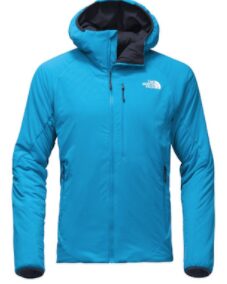
Soft Shell Pants
If you find your legs get cold with normal hiking pants (check out my guide to hiking clothes for recommendations) and a cozy base layer, consider investing in softshell pants. These pants feature a thin fleece lining, semi-water and windproof outer shell, pockets for avalanche safety gear, and even a guard for crampons.
Really cold environments and serious mountain hikers might want to add soft shells to their list.
KULH’s Klash Pant softshell is a great men’s option. They offer durability, stretch, and breathable fabric. Since men typically run warmer than women, they aren’t as insulated as the women’s pants.
MSRP: $139
For women or those who run a little colder, I’d recommend the REI Co-Op Activator V2 Soft Shells (MSRP: $100) or the Outdoor Research Cirque Pant ($150 or on sale for $104). Both pans have a built-in belt to keep the pant snug, are crampon compatible, and will keep you warm.
The REI pants are a bit more affordable, but the crotch seam is a little weak and the pockets leave something to be desired.
While the Outdoor Research Cirque Pant was the absolute most amazing thing ever (finally a women’s pant designed with function in mind). The newer version – not linked – has a high waist and long legs that I didn’t particularly enjoy.
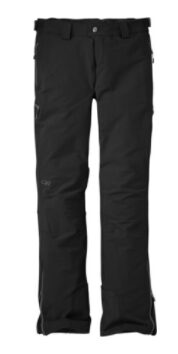
Outer Waterproof Layers for Winter Hiking
Your last layer should be a duty wind and waterproof layer. Although you may not need this for every hike, having these essential pieces of winter hiking clothes will keep you dry and eliminate the frigid wind.
To be totally honest with you, for bottoms, I’ve gotten away with the REI Co-Op Essential Rain Pants (men’s are here) for years. These zip up the sides so you don’t have to remove any footwear to quickly get them on.
Rain gear is pricey (and water proof snow gear even more so). However these work well and won’t break the bank.
MSRP: $60
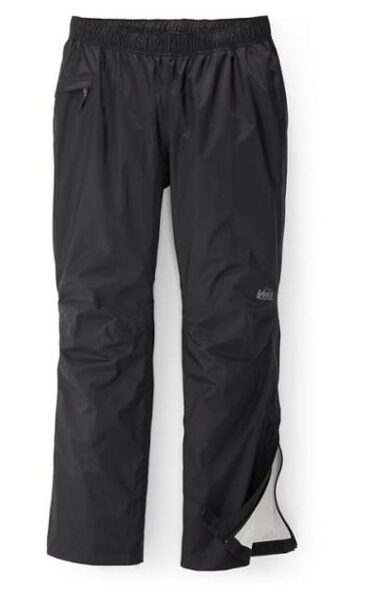
On top, the REI Co-Op Rainier Rain Jacket (men’s available) also holds up to winter’s wild weather. Combined with a puffy, fleece, and base layer, you won’t get cold all bundled up.
MSRP: $45-$90
Do they make snow-specific shells? Absolutely. I have an old, discontinued snow shell I’ll use in really burly conditions. However, a duty, waterproof rain layer will do the trick just as well. Alternatively, you can use your ski resort shell too.
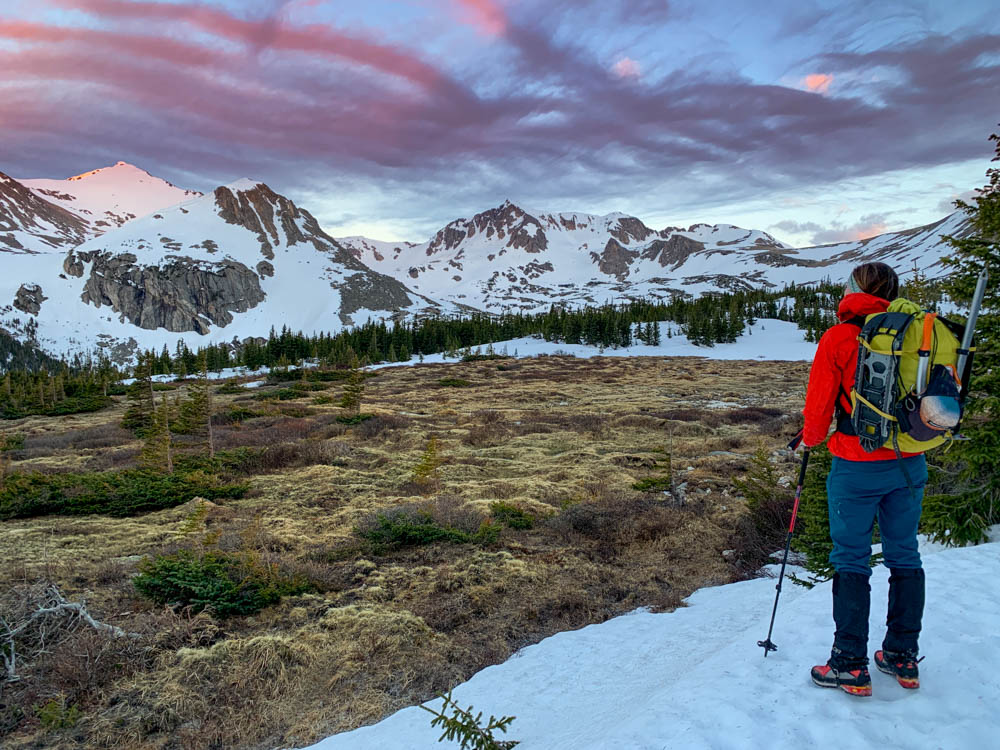
Additional Winter Hiking Clothes Accessories
Now that you’ve got your basic winter hiking clothes down, there are a few more key accessories to consider. Don’t leave for your snowy hike without these essentials.
Glove Liners
With Reynauds, I hate virtually all glove liners. However, the North Face e-tips work well for people who don’t suffer from bad circulation. Bonus points for being able to use your phone with them on.
MSRP:
Gloves and Mittens
If you have cold hands like me, the Hestra Gloves are a must-make investment. I personally love the Hestra Army Leather Patrol Insulated Gloves.
The liners are removable and they are the only warm glove I’ve tried that actually keeps your dexterity intact too. Seriously, I can belay climbers and hold axes with zero problems in these gloves.
MSRP: $140
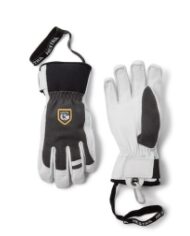
Beanie
You don’t need a fancy beanie to go winter hiking, but you do want something to cover your head. On milder days, use a fleece-lined headband to cover your ears.
You can opt to use wool or a fleece-lined beanie to hike. Just be sure to ditch the cotton. If you wear a helmet and want to double-up, get a beanie without any poofs on top.
Buff
A Buff or neck gaiter is a must-have accessory. It’s like having a scarf without the weight. Not to mention, in today’s day and age, it doubles as a face mask.
MSRP: $20 – $25
Sunglasses and Goggles
One thing to remember about winter hiking is sun protection. Aside from globbing sunscreen under your nose and chin, you’ll want to protect your eyes.
On milder days, your favorite pair of sunglasses will do (just make sure you’ve got proper UV protection). However, in crazy cold weather or high winds, go for goggles.
Smith makes a variety of reasonably priced goggles for winter use. The band and frames stay good forever and you can always swap out lenses.
Winter Hiking Gaiters
One of the biggest pieces of winter hiking clothes is a solid pair of gaiters. Gaiters attach to your boots with straps and clips, then velcro up at about your calves.
They keep the snow out of your boots and pants, which has obvious benefits. the REI Co-Op offers a calf-height pair at a reasonable price.
MSRP: $55
Avoid the low gaiters since those are mainly useful for keeping out rocks, not deep snow. Gaiters also help keep your legs warm, so you might find that you don’t need to layer up quite so much on the bottom.
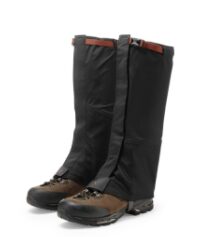
Winter Hiking Clothes Checklist
Phew, so you’ve made it this far! Congrats. Just to recap, here’s a quick checklist for your winter hiking clothes:
- boots
- non-cotton, thick socks. Take a spare pair just in case your feet get wet.
- wool, silk, or synthetic base layers top and bottom
- fleece upper layer
- softshell pants or hiking pants
- synthetic or down puffy jacket (usually packed in your bag)
- water-proof pants (usually packed in your bag) and a waterproof outer jacket (also usually packed in your bag unless it’s exceptionally snowy or windy).
- glove liners
- gloves
- beanie or fleece headband
- neck gaiter
- snow gaiters for your shoes
- sunglasses and goggles (wear your sunglasses to start, and pack goggles in case it gets rugged)
Quick Tips for Scoring a Deal on Winter Hiking Clothes
If you’re looking to score a deal on outdoor gear, you’ll want to know a few tricks. The best time to buy winter hiking clothes is either early fall or late spring. Keep in mind, you might not find your size in late spring.
Here are a few additional quick tips:
- Sign up for mailing lists to get instant discounts.
- Keep an eye out and shop for sales
- Look at second-hand clothing stores for big-name brands
- Do a clothing swap with friends
- Join an outdoor club that has access to pro-level deals
Additional Winter Hiking Resources
Ready to hit the trails this winter? Be sure to check out these resources for more information:
